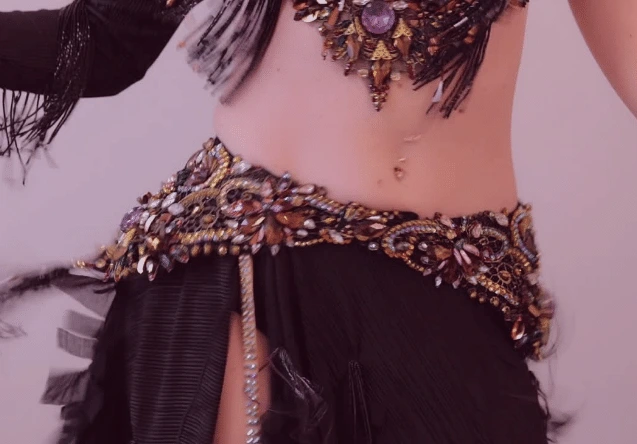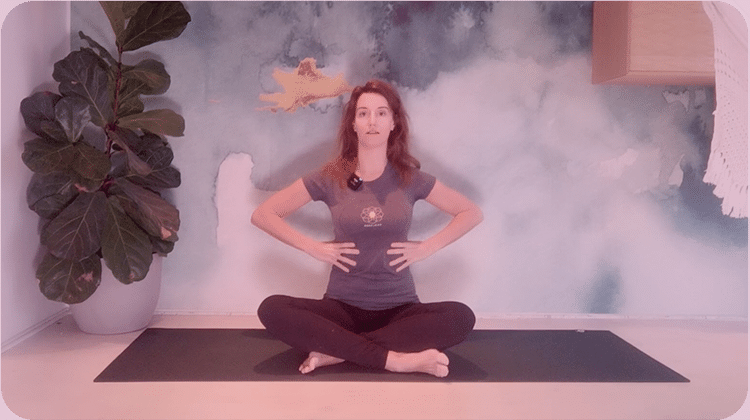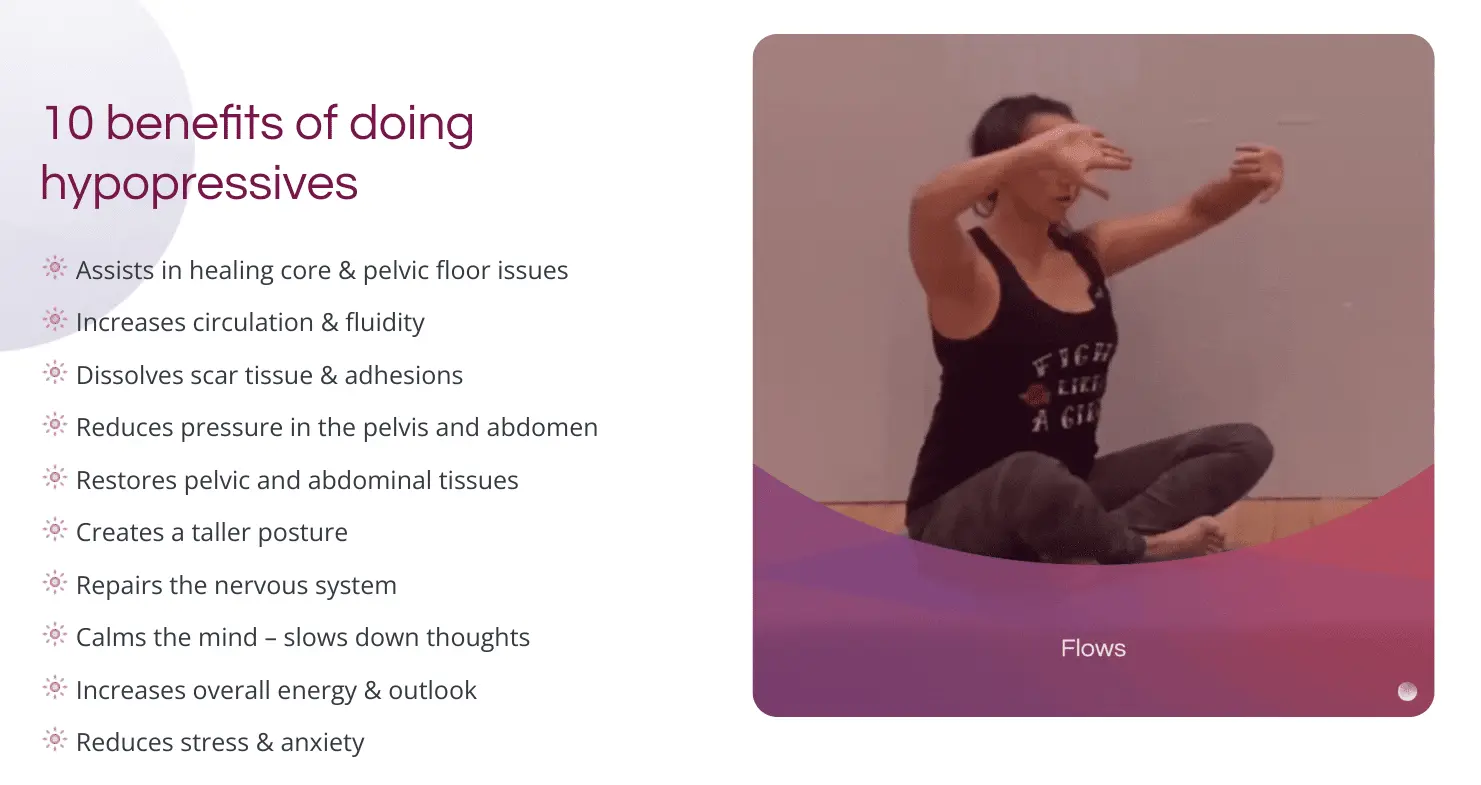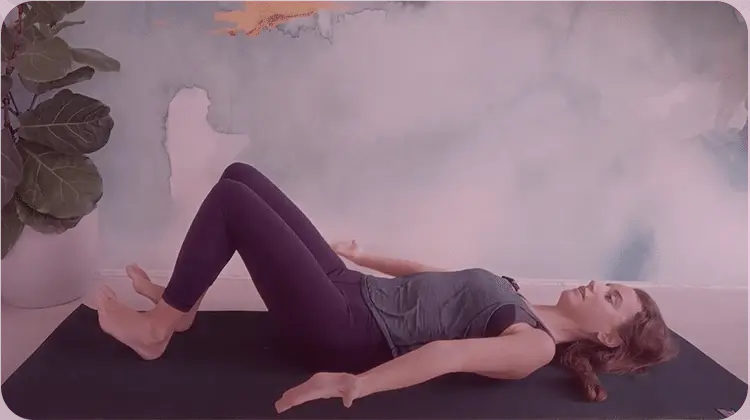Urinary Incontinence Natural Treatment: Belly Dancing
- October 1, 2022
- Pelvic Floor
Back To Blog  Did you know that one of the best natural treatments for urinary incontinence has been around for over a millennium? The World Health Organization declared urinary incontinence a health priority because 200 million people worldwide suffer from it and 80% of them are American women. The related symptoms are not just physical in nature, they also have an impact on women’s mental health, confidence levels, and social lives. Women suffering from incontinence may have undergone therapy, taken different types of prescribed medicines, tried different exercises, and spent thousands of dollars in the process — with little to no results to show for it. Yet, what women might not know is that a fun, uplifting dance technique that has been in existence for over a millennium can reverse incontinence. What technique am I talking about? Belly dance! Before we explain how belly dancing for incontinence is helpful, let’s first do a deep dive into what urinary incontinence is.
Did you know that one of the best natural treatments for urinary incontinence has been around for over a millennium? The World Health Organization declared urinary incontinence a health priority because 200 million people worldwide suffer from it and 80% of them are American women. The related symptoms are not just physical in nature, they also have an impact on women’s mental health, confidence levels, and social lives. Women suffering from incontinence may have undergone therapy, taken different types of prescribed medicines, tried different exercises, and spent thousands of dollars in the process — with little to no results to show for it. Yet, what women might not know is that a fun, uplifting dance technique that has been in existence for over a millennium can reverse incontinence. What technique am I talking about? Belly dance! Before we explain how belly dancing for incontinence is helpful, let’s first do a deep dive into what urinary incontinence is. There are several categories of urinary incontinence, as defined by the medical community. 1. Stress Urinary Incontinence (SUI) SUI is the most common type, especially in older women. A problem with the nerves or bladder damage can be categorized with these symptoms. • Overactive Bladder. This happens when the damaged nerves send signals to the bladder at the wrong time which causes the muscles to squeeze without warning. • Poor Control of Sphincter Muscles. It occurs when the sphincter is damaged. Loose muscles allow leakage or they become too tight when urinating. • Urine Retention. Due to nerve damage, the message to urinate was stopped, and the weak bladder intensifies the issue. Causes of nerve damage include vaginal childbirth, stroke, infections of the brain or spinal cord, diabetes, accidents that injured the brain or spinal cord, multiple sclerosis, and heavy metal poisoning.
There are several categories of urinary incontinence, as defined by the medical community. 1. Stress Urinary Incontinence (SUI) SUI is the most common type, especially in older women. A problem with the nerves or bladder damage can be categorized with these symptoms. • Overactive Bladder. This happens when the damaged nerves send signals to the bladder at the wrong time which causes the muscles to squeeze without warning. • Poor Control of Sphincter Muscles. It occurs when the sphincter is damaged. Loose muscles allow leakage or they become too tight when urinating. • Urine Retention. Due to nerve damage, the message to urinate was stopped, and the weak bladder intensifies the issue. Causes of nerve damage include vaginal childbirth, stroke, infections of the brain or spinal cord, diabetes, accidents that injured the brain or spinal cord, multiple sclerosis, and heavy metal poisoning. There are many natural ways to reverse and prevent urinary incontinence. But, we don’t believe Kegels can help. That’s why you won’t find them mentioned on this list. So, now let’s go ahead and share what we believe works.
There are many natural ways to reverse and prevent urinary incontinence. But, we don’t believe Kegels can help. That’s why you won’t find them mentioned on this list. So, now let’s go ahead and share what we believe works. Belly dancing targets areas like the abdomen, trunk, spine, neck, torso, thighs, and pelvis. This graceful and fun dance works with the body instead of against it like some other cardio exercises. During belly dancing, you activate your pelvic floor, create circulation and stimulation which results in a reflexive pelvic floor that responds to your daily life activities. Plus, belly dancing incorporates movements and the rhythm we were born to move our bodies to. It’s a soft, feminine, freeing style of dance that brings us together in a way where we can have fun without shame or judgment.
Belly dancing targets areas like the abdomen, trunk, spine, neck, torso, thighs, and pelvis. This graceful and fun dance works with the body instead of against it like some other cardio exercises. During belly dancing, you activate your pelvic floor, create circulation and stimulation which results in a reflexive pelvic floor that responds to your daily life activities. Plus, belly dancing incorporates movements and the rhythm we were born to move our bodies to. It’s a soft, feminine, freeing style of dance that brings us together in a way where we can have fun without shame or judgment.
Urinary Incontinence Natural Treatment: Belly Dancing
 Did you know that one of the best natural treatments for urinary incontinence has been around for over a millennium? The World Health Organization declared urinary incontinence a health priority because 200 million people worldwide suffer from it and 80% of them are American women. The related symptoms are not just physical in nature, they also have an impact on women’s mental health, confidence levels, and social lives. Women suffering from incontinence may have undergone therapy, taken different types of prescribed medicines, tried different exercises, and spent thousands of dollars in the process — with little to no results to show for it. Yet, what women might not know is that a fun, uplifting dance technique that has been in existence for over a millennium can reverse incontinence. What technique am I talking about? Belly dance! Before we explain how belly dancing for incontinence is helpful, let’s first do a deep dive into what urinary incontinence is.
Did you know that one of the best natural treatments for urinary incontinence has been around for over a millennium? The World Health Organization declared urinary incontinence a health priority because 200 million people worldwide suffer from it and 80% of them are American women. The related symptoms are not just physical in nature, they also have an impact on women’s mental health, confidence levels, and social lives. Women suffering from incontinence may have undergone therapy, taken different types of prescribed medicines, tried different exercises, and spent thousands of dollars in the process — with little to no results to show for it. Yet, what women might not know is that a fun, uplifting dance technique that has been in existence for over a millennium can reverse incontinence. What technique am I talking about? Belly dance! Before we explain how belly dancing for incontinence is helpful, let’s first do a deep dive into what urinary incontinence is.Urinary Incontinence
The brain and bladder control your urinary function. The bladder stores your urine and the muscles in the lower part of the pelvis hold the bladder in shape. Before urinating, your smooth muscles are relaxed. The sphincter muscles are closed around the urethra and carry the urine out of the body. A healthy and closed sphincter doesn’t let the urine leak. Having the urge to urinate, the brain sends a signal to the bladder to contract and release tinkle-your sometimes yellowish to white urine depending on your water intake or health condition. This horrible and often embarrassing condition puts a huge amount of mental and emotional stress on a person. So besides the need to address the physiological reasons why incontinence exists, it’s also vitally important to address these types of stress before they create a negative spiral.Types Of Urinary Incontinence
 There are several categories of urinary incontinence, as defined by the medical community. 1. Stress Urinary Incontinence (SUI) SUI is the most common type, especially in older women. A problem with the nerves or bladder damage can be categorized with these symptoms. • Overactive Bladder. This happens when the damaged nerves send signals to the bladder at the wrong time which causes the muscles to squeeze without warning. • Poor Control of Sphincter Muscles. It occurs when the sphincter is damaged. Loose muscles allow leakage or they become too tight when urinating. • Urine Retention. Due to nerve damage, the message to urinate was stopped, and the weak bladder intensifies the issue. Causes of nerve damage include vaginal childbirth, stroke, infections of the brain or spinal cord, diabetes, accidents that injured the brain or spinal cord, multiple sclerosis, and heavy metal poisoning.
There are several categories of urinary incontinence, as defined by the medical community. 1. Stress Urinary Incontinence (SUI) SUI is the most common type, especially in older women. A problem with the nerves or bladder damage can be categorized with these symptoms. • Overactive Bladder. This happens when the damaged nerves send signals to the bladder at the wrong time which causes the muscles to squeeze without warning. • Poor Control of Sphincter Muscles. It occurs when the sphincter is damaged. Loose muscles allow leakage or they become too tight when urinating. • Urine Retention. Due to nerve damage, the message to urinate was stopped, and the weak bladder intensifies the issue. Causes of nerve damage include vaginal childbirth, stroke, infections of the brain or spinal cord, diabetes, accidents that injured the brain or spinal cord, multiple sclerosis, and heavy metal poisoning.2. Overactive Bladder or AOB
AOB is a common type of incontinence that affects 40% of women in the US and those who are menopausal. With an overactive bladder, the main symptom is the unexpected urge to urinate because your brain tells you to empty even when it’s not full.3. Mixed Incontinence
This means having more than one type of incontinence. The most common combination is SUI and AOB. Curious to know what we think? At MoonRise, we’ve found that scarred or damaged fascia, adhesions, nerve damage, and poor circulation in the pelvic floor are the main reasons for urinary incontinence. With this understanding, it’s easier to address the symptoms and give you the right set of tools to remedy the incontinence, and belly dance is one of these tools.Urinary Incontinence Natural Treatment Options
 There are many natural ways to reverse and prevent urinary incontinence. But, we don’t believe Kegels can help. That’s why you won’t find them mentioned on this list. So, now let’s go ahead and share what we believe works.
There are many natural ways to reverse and prevent urinary incontinence. But, we don’t believe Kegels can help. That’s why you won’t find them mentioned on this list. So, now let’s go ahead and share what we believe works.1. Hypopressives
Hypopressives are a series of exercises, postures, and breathing techniques wrapped up neatly into a short, flowing routine that is really easy to fit into your day. Aside from being easy, Hypopressives also improve pelvic floor health as well as core functionality. 2. Belly Dancing Belly dancing is an exotic and very sensual form of dance. It looks sexy, sure. But that’s not all that there is to it. The pelvic floor and surrounding muscles intensify the artistic essence of this dance. 3. Scar Tissue Remediation Scar tissue and adhesions in the pelvic floor fascia can lead to pelvic floor dysfunctions, like incontinence. And one very effective way to eliminate scar tissue and adhesions is to melt it away internally (vaginally) with the technique known as scar tissue remediation. 4. Power of the Pelvis This is a somatic-based program that follows the principles taught in The Feldenkrais Method. The exercises teach you gentle, mindful movements to correct your posture, teach you how to breathe consciously, and relax the nervous system. Doing these exercises improves the relationship between your brain and your pelvic floor, bringing about better health in this area and your overall being. 5. Vaginal Steaming V-steaming or yoni steam is an ancient alternative practice to support and enhance female health. A pot or bowl of hot water is infused with therapeutic herbs and placed in a yoni steam seat or on the floor. Then, you’d sit on the yoni seat or come into a comfortable position on the floor while the steam comes up into the vagina. 6. EFT Tapping Emotional Freedom Technique (EFT) is an energy psychology tool that combines talk therapy with acupressure (in the form of tapping on the body) to address and heal emotional wounds. Many emotions can come up when facing a health condition, such as fear, frustration, overwhelm, shock, embarrassment, anger, etc. And when not properly addressed, they can get stuck in our bodies and create further problems. EFT tapping is one way to release and let go of the difficult emotions you may be feeling, which will assist in the healing process. 7. Chinese Herbal Blends The Gosha-jinki-gain (GJG) blend has been approved by many oriental doctors as more than a natural treatment. Multiple studies and research has been published and highly encouraged. The aromatic and enticing blend consists of herbs that inhibit the bladder and significantly improve daytime frequency.Belly Dancing History & the Pelvic Floor
 Belly dancing targets areas like the abdomen, trunk, spine, neck, torso, thighs, and pelvis. This graceful and fun dance works with the body instead of against it like some other cardio exercises. During belly dancing, you activate your pelvic floor, create circulation and stimulation which results in a reflexive pelvic floor that responds to your daily life activities. Plus, belly dancing incorporates movements and the rhythm we were born to move our bodies to. It’s a soft, feminine, freeing style of dance that brings us together in a way where we can have fun without shame or judgment.
Belly dancing targets areas like the abdomen, trunk, spine, neck, torso, thighs, and pelvis. This graceful and fun dance works with the body instead of against it like some other cardio exercises. During belly dancing, you activate your pelvic floor, create circulation and stimulation which results in a reflexive pelvic floor that responds to your daily life activities. Plus, belly dancing incorporates movements and the rhythm we were born to move our bodies to. It’s a soft, feminine, freeing style of dance that brings us together in a way where we can have fun without shame or judgment.A Bit of Belly Dance History
The art and ritual of belly dancing began thousands of years ago. It was used to increase fertility and strengthen the body, especially the pelvic floor, to prepare for birth. Archaeologists can trace back the origin of belly dance due to the artifacts they discovered around the world, including in parts of Italy, Greece, Egypt, Africa, the South Pacific, and several other countries. In some cultures, women danced for various gods and goddesses, or danced for their mothers to communicate they were ready for marriage and motherhood. Yet, there were women from other cultures who were not allowed to perform this dance in front of men. Also, when women belly danced, they were often barefoot to emphasize the intimate physical connection of her body & expression to mother earth. Not only that, but they wore beautiful costumes as they danced. Costumes Costumes or outfits worn during belly dancing are often colorful, flowing garments with flowing scarves and veils. You may have seen belly dancers with finger cymbals, pieces of jewelry, or intricate golden belts that make beautiful sounds while dancing. Dressing in this way with bright and bold colors brings out a range of uplifting, positive emotions that help women feel good in their bodies and they might even feel sexy again for the first time in a long time, or for the first time ever.Belly Dancing reaches the West
Just a few hundred years ago belly dancing reached America and other Westernized countries. It wasn’t necessarily well-received at first, but quickly gained popularity. Fast forward to today and it’s fairly common to find belly dancing classes at dance studios and taught online for anyone around the world who wants to learn. This practice may have only reached certain cultures many thousands of years ago, but it’s now a dance that women from diverse backgrounds and upbringings want to try.Belly Dancing is Not Just For Urinary Incontinence
Belly dancing doesn’t only relieve urinary incontinence…it has many more benefits. Decreases back pain The human spinal column is stacked with 33 vertebrae and joined with ligaments and cartilage. Its health affects your flexibility and function. During belly dancing, your pelvis is tipped forward, adding the rhythms of your body, it relieves tension in the back and counteracts the compression of the disks.Exercise For Childbirth & Postpartum
Exercise prior to childbirth is essential in the female pelvic floor. Due to the slow impact and rhythms of belly dancing, it is approved for women wanting a healthy pregnancy. The pelvic rocking of the dance targets pelvic muscles which improve blood circulation and carries more oxygen through the fetus. Given the low impact nature of this exercise, belly dance is also a great way to heal postpartum and to boost feel-good hormones, which are especially important post labor.Aids Menstrual Cramps
By focusing on your pelvic muscles, blood circulation improves, thus helping in stopping and curing cramps.Stress Reduction
Stress is a silent killer. With stress associated with unhealthy lifestyle, inflammation occurs. Inflammation has been proven by science to hinder your body’s natural function. During a mental or physical stress, your body tenses up which causes muscle spasms on your neck, shoulder, and back. When your muscles contract, lactic acid builds up and blood flow decreases, causing pain or soreness. Aside from the rhythmic dance, your costume will definitely put your stress away!Aids Digestion
Belly dancing targets your abdominal muscles and exercises your intestines and colon. Added with a healthy diet, your metabolism can increase and improve digestion. Pelvic Floor Dysfunction Since this technique brings circulation and oxygen to the pelvic floor fascia and muscles, it’s a great method for minimizing symptoms of prolapse, incontinence (as we’ve mentioned), pelvic pain, low libido, and other pelvic floor dysfunctions.Dance Your Heart Away!
Belly dancing is not just a dance or an exercise. The rich history of this rhythmic movement has lived on for many obvious reasons. It has cultural value, and natural therapeutic properties. And the uplifting, fun “put-a-smile-on-your-face” moves will dominate more than its current use today. We love this technique so much that we’ve created a belly dancing course at MoonRise for our customers working to heal pelvic floor dysfunction and diastasis recti. Our teacher Jennifer Sobel has taught belly dance for a few decades and has heard stories from her students about how belly dance helped them reverse incontinence. If you haven’t tried belly dancing, we highly recommend it so you can experience all the benefits it has to offer!Blog posts you might like:?
Blog posts you might like:

February 22, 2023
How to heal pelvic floor dysfunction using Hypopressive techniques 
January 18, 2023
Hypopressive breathing exercises: What you need to know 



